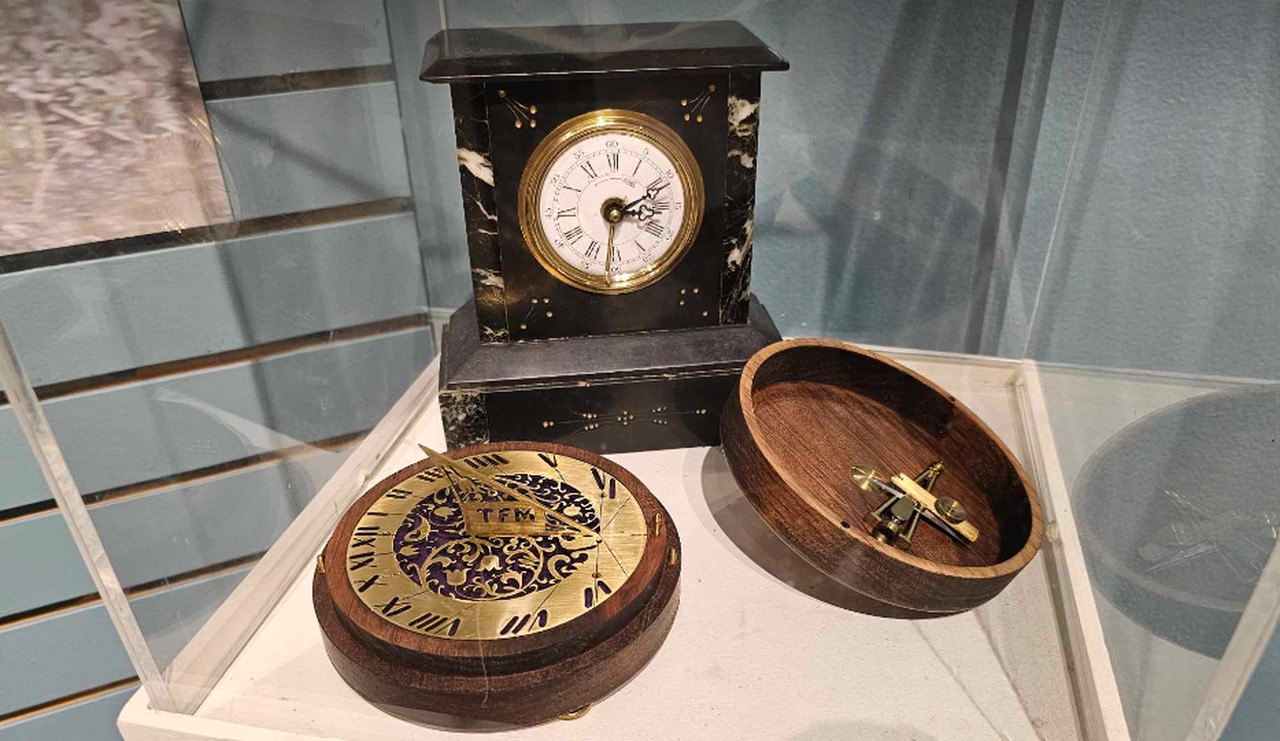S-Townâs John B. McLemore clock restoration work gets spotlight in book, exhibit
John B. McLemore was obsessed with time.
The Woodstock man – who gained posthumous fame through the 2017 podcast “S-Town” – once observed in an email that a sundial he made was out on his porch, “quietly and relentlessly counting down the hours until my certain death.”
A new book and exhibit is showing the evidence of that obsession: McLemore’s extensive clock restorations. At the same time, the two works are presenting a larger portrait of the enigmatic Bibb County man.
“S-Town Exquisite Clocks: Celebrating the Artistry of John B. McLemore, Horologist” is a book by Philip E. Morris Jr. and William R. Tatum, and has been available in hardcover and paperback for about a month.
It accompanies an exhibit of more than 40 timepieces at the National Watch and Clock Museum in Columbia, Penn.
The exhibit, which runs through the end of the year, was the inspiration for a gathering last week at the museum that included Brian Reed, the creator of the “S-Town” podcast, and Cheryl Dodson, one of the Woodstock residents who knew McLemore.
“It was wonderful to be among people that would have been his peers, and appreciated his work and craftsmanship and spoke his language,” Dodson said. “It was so much to process, I went back to the hotel and cried. It felt like you finally got to attend the memorial service that John deserved.”
“S-Town” was released in 2017 and has been downloaded more than 92 million times. The multi-part audio series recounts how McLemore, an eccentric antique clock restorer, contacted Reed, a producer for “This American Life,” about a suspected murder. Reed traveled to Alabama, investigated the case, and carried on a correspondence with McLemore until his death by suicide on June 22, 2015.
Reed then assembled the “S-Town” podcast, telling the story of McLemore’s life and death and the reactions of his friends, relatives and associates.
See also: Who is John B. McLemore, figure in ‘S-Town’ podcast?
The series takes its title from McLemore’s less-than-charitable name for the Bibb County community of Woodstock, but caused visitors from around the globe to seek out the podcast’s setting. The story was announced as a film project back in 2018.
“S-Town” mentioned several aspects of McLemore’s life, such as the hedge maze on his property, and his friendships with an eccentric cast of local characters.
Morris’ awareness of McLemore goes back to 1979, when Morris was a sophomore at Birmingham-Southern College and began collecting clocks. At the time, McLemore was a 13-year-old already learning the craft of horology, or the art of clock restoration. Still, it was several years before the two actually met.
It was only after his daughter informed him that Morris learned McLemore was the subject of “S-Town,” which he and his wife devoured in one sitting. Yet, when Morris knew him, McLemore had little patience for tattoos and piercings – an outlook that obviously changed by the time Reed encountered him.
Morris, an organic chemist, said while “S-Town” was an accurate depiction of McLemore, there was much more to him than the profane, irascible character who inhabited the podcast.
“John was quirky, outspoken, and God knows he was unfiltered,” Morris said.
“If John was passionate about something, he was very content. If he did something, he wanted to do it right. The word genius gets thrown around a lot. John was a genius. What’s remarkable about John is that everything he learned about horology, clock restoration, electroplating, chemistry, astronomy, geometry – it was all self-taught, and before the Internet. John learned everything by reading.”
One gets a sense of this in both the book and the exhibit, which gathers about 40 clocks McLemore restored, often requiring patient, meticulous work. One clock required eight different metal finishes, Dodson said.
“I was friends with John. I had been to his house and workshop, but I had never seen the talent, the artistry,” she said. “I took him a 1940s clock that I bought at a yard sale. I didn’t know he was working on 1700s French clocks.”
